Who and how drove Furio into a trap: unraveling the plot of the movie Mr. Devil (2019): plot summary, movie meaning, ending explanation, similar movies.
Country: Italy
Genre: drama, detective, mystery, arthouse
Year of production: 2019
Director: Pupi Avati
Actors: Filippo Franchini, Gabriele Lo Giudice, Lino Capolicchio, Cesare Cremonini
Awards and nominations: prize of the Italian National Association of Journalists for best original screenplay and nominations for best director and production design in 2020; nomination of Pupi Avati as best director by the film magazine “Siak” for the “Golden Clapper – 2020” award.
The meaning Mr. Devil (“Il signor Diavolo”) seems to have been understood and well appreciated in Italy, which is why the film was honored with international distribution. However, outside its borders not everyone found the clues to the intricacies of the plot and saw the idea of the picture as a whole. Let’s make a breakdown of the picture and try to answer the questions that have arisen.
The plot of the movie Mr. Devil
In the opening scene, we watch a boy (we later learn his name: Emilio) eating a baby and roaring like a wild animal.
Italy, fall 1952. The protagonist, a young official named Furio Momente, is given a serious assignment. He must go to Venice to deal with a mysterious case. According to the description of Furio’s superior, there was a murder: one boy killed another. The murderer confesses to what he has done. In his defense, he claims that he killed the Devil himself.
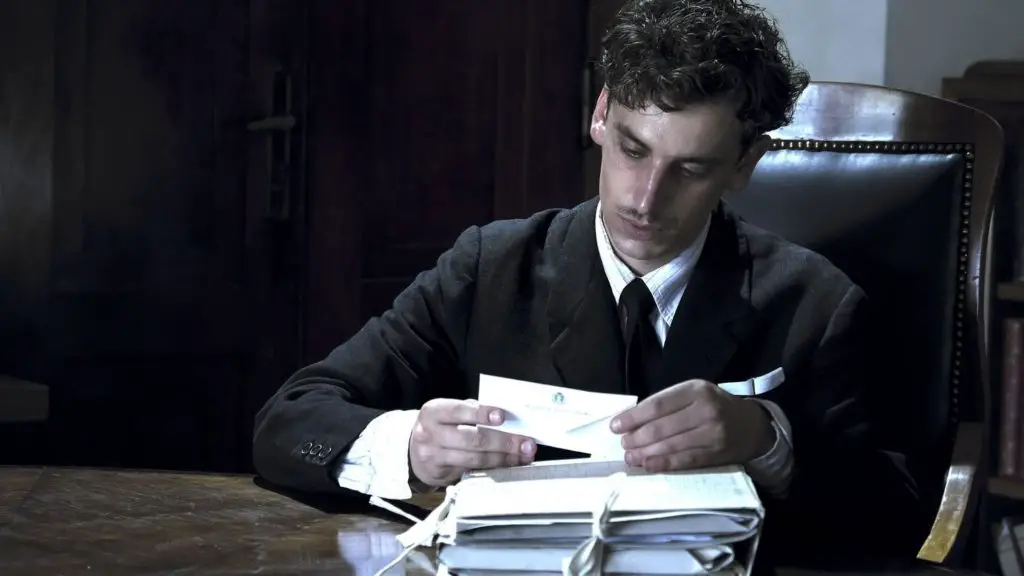
The importance of the case is due to the threat to the reputation of the current party in power, the Christian Democrats. If it becomes known that church officials (namely, a nun and a sacristan) were involved in the murder of the boy, it may be interpreted by the public as a manifestation of obscurantism, which is being fought in a showy manner. In turn, this threatens to tip the balance in favor of the Communists in the upcoming elections in the region. The victim’s mother herself is an influential representative of the latter (although previously she was, on the contrary, aligned with the Christian Democrats).
Furio is given transcripts of interrogations from classified case files and a letter from the Ministry of Justice, which is allowed to be used only in the most extreme cases – the official’s visit must remain secret. The hero wonders why his superiors are sending him. After all, he is a modest worker and until now has not been considered worthy of such responsible tasks. The boss says that his colleagues are departing from the Christian faith, and Furio, unlike them, shares “the true fundamental values of our civilization”.
The hero visits his paralyzed father in the asylum. A nurse named Laura smiles at Furio and the latter concludes that the girl is not indifferent to him. The young people agree to keep in touch by phone. Laura suggests that Furio’s father adored him. However, the hero’s memories tell of something else: the boy was locked in a dark closet for the slightest provocation.
Furio goes to Venice by train. There are no free seats, so he sits on a suitcase in the aisle, so that he can familiarize himself with the case file on the way. Next we watch the visualization of the testimony of the accused, a boy named Carlo. He tells of his friendship with a boy named Paolino. He was always showing off for a girl named Liu. In an attempt to impress her, he used to shoot her with a slingshot. According to Paolino, the girl even got naked in front of him once.
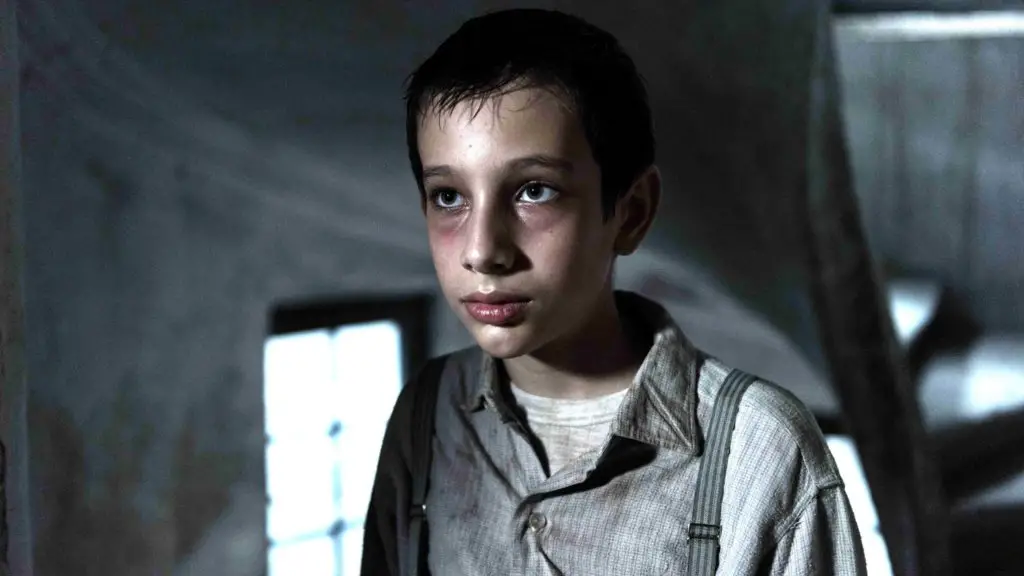
Carlo had probably already mentioned the Devil in his testimony, for during the interrogation he was asked why he called the creature “Mr.”. The boy replied that the vestryman Gino had taught it to the children. In his theology lessons he said that even someone who is not good should always be addressed with respect. The sacristan also told them that Mr. Devil’s bites were similar to those of a pig. According to him, the creature once even tried to get into the church through the basement.
Carlo tells of his cousin Dolores, who lived at the convent as a nun. She said of Emilio (the boy Carlo killed) that he had spent a long time in an asylum for the mentally ill for killing his younger sister. Dolores claimed that he literally gnawed on the infant. It becomes clear that this scene was visualized to us at the beginning of the film. Carlo also claims to have seen Emilio’s huge teeth. The latter had attacked him with Paolino when the latter once again decided to show off to Liù with a slingshot.
Carlo tells of another occasion when Emilio showed his true colors. At the First Communion ceremony, which had not been held there since the Second World War, he tripped Paolino. The boy inadvertently stepped on the vestment (Eucharistic bread, the ceremonial food consumed at communion as “the body of Christ”). This was seen as a desecration of the shrine and the ceremony was immediately stopped. The next day Paolino falls ill. Carlo visits him and sees that his friend seriously thinks he is going to die and will remain as a disembodied spirit after death. Paolino says that as such he will give some kind of sign. Carlo visits Emilio. He gloats and says that everything is just beginning.
Paolino is dead. Carlo waits for the promised sign. The mother of the deceased gives him his friend’s belongings. Among them Carlo discovers a slingshot.
The boy sees Liù and asks her to show him her naked body. In exchange for a promise to bring a rabbit, she fulfills the request.
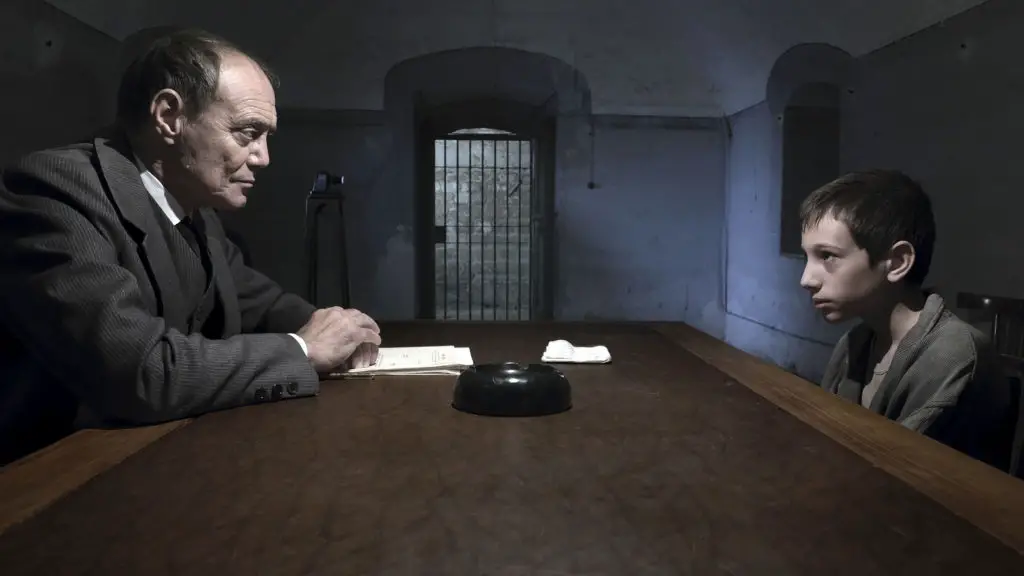
Carlo has a conversation with the vestryman Gino. He says that the boy will have a chance to talk to his deceased friend if he does something. Carlo must recommend Emilio as an altar server to replace the deceased Paolino and then the latter will help. The boy accomplishes the task. At the service Carlo sees Emilio’s hands: the hair on them resembles the stubble of a pig. And during the prayer he vomits. Emilio does give Carlo “instructions” to bring back his dead friend. At the continuation of the communion ceremony, the boy must not eat the cloud, but take it with him and put it in the feed of the boar at the farm.
Carlo does as told and soon “makes contact” with the dead friend. He sees the pages of the book moving by themselves, and then he hears Paolino’s voice. The latter answers Carlo’s verification question (the answer has to do with their old prank and only the two of them knew it).
The boy tells his parents about the incident and they take his son to the nuns. The nuns advise him to kill the boar that ate the sacred cloud and burn its body. Carlo’s father does this, after which they both return home. Upon opening the gate for the car, Carlo finds his father dead and his face disfigured. From somewhere comes Emilio’s ominous voice: “You’re the reason Mr. Devil was killed – that boar was killed!”. After the body is taken away Carlo goes outside at night and hears that voice again. Emilio approaches from the darkness and the boy shoots him with a slingshot. On the third time Carlo hits his opponent in the eye, thus inflicting a fatal wound.
Emilio’s mother Clara Vesti Musi (the same influential representative of the party opposing the Christian Democrats) tells investigators about her son. According to her, Emilio suffered from epilepsy caused by a brain tumor. They tried to treat him with electroshock and radiation therapy, but with little success. Clara and her husband tried to conceive another child, but in vain. One day they saw a little girl whose mother had died in childbirth and took her in. However, after a while she also died. Emilio had nothing to do with this death. Moreover, he grieved very much over the girl’s death, literally going mad and ending up in a psychiatric hospital in connection with it. Thus, Clara calls the rumors about her son only rumors and blames his murder on the nun and the sacristan, who, in her opinion, encouraged Carlo to commit the crime. She demands that the perpetrators be brought to justice, despite the opinion of the patriarch and the authorities, represented by the Christian Democrats. We again see the same scene of Emilio eating the girl, this time as a visualization of the investigator’s imagination.

Furio Momente finally arrives in Venice. He checks into a hotel and immediately receives from the porter an envelope with the fangs of an animal inside. Furio learns from the daantisto that they are probably the teeth of a pig – probably a wild pig, since domestic pigs have different teeth.
Furio learns from the case file that the professor who autopsied Emilio’s body did not perform the procedure properly. First, he interrupted it for a phone call, and then secretly completed it on his own, making a conclusion also individually.
Furio suddenly hears a baby crying. In the hotel corridor, he discovers only a crib, which begins to bleed as soon as the official locks himself in his room.
In conversation with Furio, the pathologist holds a plausible version. According to him, rumors of a diabolical origin were spread by nuns. And the professor really took a phone call during the autopsy – he received a call from Clara, who asked not to publicize the data on the physical abnormalities of her son.
The hero visits the prison to talk to Carlo. He uses a letter from the Ministry as a pass. Carlo tells Furio that the fangs sent to him are Emilio’s teeth. The boy is convinced that the murdered man was the son of Clara and a certain monster and as such possessed the knowledge of bringing the dead back to life. Carlo advises Furio to talk to the sacristan Gino – he knows the truth and knows what is under the church.
Furio calls Laura. The guy suggests going out together after his return. The girl doesn’t seem to mind.

Visualizing the case files again. The investigator goes to visit Sister Dolores. One of the nuns tells him not to take her word for it. After all, she spent a long time in the house of Clara Vesti Musi and was kicked out for spreading rumors. She was left at the convent out of pity. Dolores tells the investigator that Satan himself induced her cousin to commit the crime. According to her, he promised to return her friend from the other side of the world in return for the murder. Dolores believes that the real evil is not Emilio, but the sacristan. The murdered man acted on his instructions. Dolores also says that her mother took Emilio to an exorcist.
Furio goes to see the very same “exorcist”. He says that Emilio is actually a normal boy with physical and minor mental disabilities. His father, on the other hand, was truly insane. “The Exorcist” knows about the teeth someone sent in Furio’s envelope. He utters strange words: “It wasn’t just a murder … There is a time and a place meant only for this place – a place where you are already expected … Whoever sent you this gift – he is waiting for you”.
In the hotel lobby, Furio waits for Clara Vesti Musi. When she meets the official, she repeats her words that Dolores and the sacristan Gino should be the first to go to jail. Clara speaks again about the elections: she hopes that her party will win against the Christian Democrats – what has happened should damage the reputation of the latter. Furio offers the woman to consent to the exhumation of her son’s corpse, but she is not ready to “exchange the real reason for the murder for an attempt to save the election”.
Furio gets a call from his boss. He is terribly annoyed that the subordinate immediately used a last resort (a letter from the ministry) and calls him back.
The hero calls Laura again, but now the latter says she has a boyfriend.
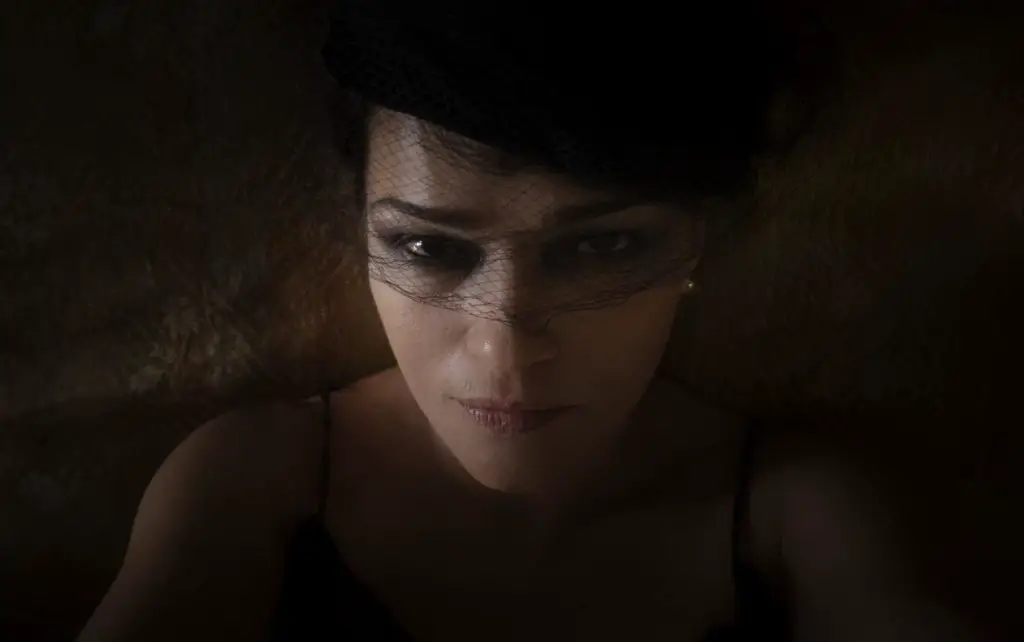
Risking his career, Furio goes to the church against the wishes of his superiors to find the vestryman and get an explanation from him. The official is informed that the rector of the church, Father Dario, has recently passed away and that Gino is hiding somewhere. While sleeping in the priest’s room. Furio hears a child crying coming from the sub-floor.
Laura receives a farewell letter from Furio. The content of the letter is rather strange. It says that the official has successfully completed his assignment and even the Deputy Prime Minister congratulated him on it.
Meanwhile, Furio goes to the convent to see Dolores, but Dolores has recently passed away.
Gino the Risnichi himself comes to the church. He shows Furio the parish archives from 1943. The documents tell of the remains of a little girl brought here and quote a letter from her mother. It tells the cause of death: the child died in her cradle, bitten by a monster who did it out of jealousy and “will be punished for it”. The letter is signed with the name of Clara Vesti Musi.
Riznichy tells us that on the night of Emilio’s murder, Clara, who was in another town, talked to Dario’s father about something. The latter found a dentist and went to manipulate the body of the murdered man, namely to secretly pull out his fangs.
Furio guesses that the girl’s corpse was left in the basement of the church. He decides to retrieve it to prove in court the real reason for the child’s murder. However, when Furio goes down into the cellar and actually finds the corpse there, the sacristan, along with Carl who has joined him (he has recently been released from prison), locks the official there. The last thing the hero sees before plunging into darkness is Carl’s fangs. Furio is once again a little boy locked in a closet.
At the end we see the church room and hear terrible screams from the sub-floor.
Mr. Devil Explanation of the ending
So, what’s the point of the ending of Mr. Devil. What happened?
In the ending we learned that Furio Momente was trapped throughout the action, and in the final scene it slammed shut. How?
First of all, it is worth realizing that for the protagonist initially created the appearance of an investigation. Entrusting Furio with a responsible task, the boss clearly lied about the reason for the trust given. After all, if the management really was such a high opinion of Momento, he would not be an ordinary official digging in the archives. And Furio immediately confirmed his incompetence by immediately showing the secret letter and then blindly following the clues. The boss also probably had no intention of returning his subordinate. With his call, he only encouraged Furio to continue the “investigation”, obviously envisioning such an effect.
However, let’s remember that there was to be no real investigation. Furio was ordered to hush up a scandal that threatened the reputation of the ruling party, the Christian Democrats. We know from history that they won first place in the 1952 elections (32% of the vote), ahead of the Communists (18%). So, it turns out, the scandal was hushed up – according to the film version, a sacrifice to Mr. Devil. The victim was Furio Momente himself.
Yes, he learned the terrible truth: Emilio had really gnawed the girl out of jealousy (based on the letter, it was still Clara Vesti Musi’s own daughter). The Devil had really gotten into him. Emilio is to blame for Paolino’s death, he summoned his ghost (or made it appear so to Carlo), killed Carlo’s father and provoked his own murder. And, judging from the final shots, after Paolino’s murder, Mr. Devil moved into Carlo.
However, this truth was not to be made public. It was simply used to trap Furio. This was facilitated by the sacristan who created intrigue to the last, and the dentist who sent the official fangs, and the “exorcist” who spoke in riddles, and the Devil himself in Carlo’s body. They were all in on it.
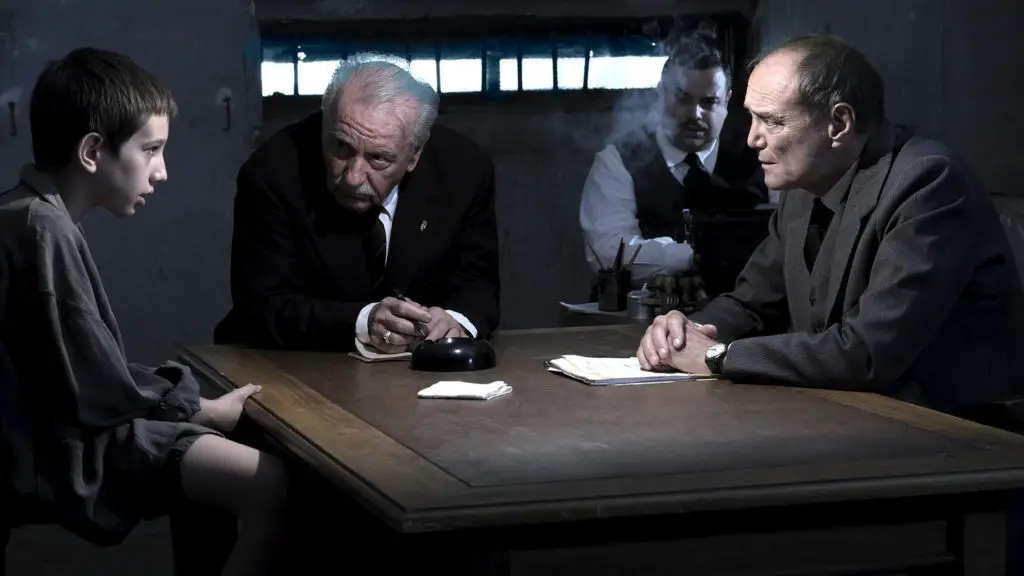
The villains not only caught Furio, but also “cleaned up their tails”. Thus, we were shown a fake farewell letter for Laura – probably, except for her and paralyzed father, the hero did not communicate with anyone else outside of work. It was written solely so that the girl did not think of looking for a meeting with the guy, and so that she did not learn the details of his failure.
Further we will try to give answers to some questions that complement this explanation of the ending.
Questions & Answers
The meaning of the movie Mr. Devil
Perhaps the main question that arises from watching the movie is: what was the point of complicating the plot so much? Why this political struggle, which remains behind the scenes, when we are talking about confronting the Devil himself? It’s just that the point of the movie is not this confrontation. The Devil feels himself quite well among people, and they cannot do anything in response to his intrigues, because they are stuck in religious superstition – the same obscurantism that Christian democrats fought against and that communists tried to expose. The director himself exposes it. And, as the feedback from the Italian audience showed, he hit the mark.
Why does the director, exposing obscurantism, pay much attention to mysticism instead of realism? It has its own hidden meaning. Pupi Awati in principle likes to mix both in his works – you could say it’s already a certain style (by the way, the movie is based on the book of the same name by the director himself). And in this way he reveals the theme on two levels. Avati shows: people are susceptible to temptation and manipulation. We see the Devil playing with people. Similarly, politicians also play with people to pursue their vested interests.
In fact, both protagonists (Furio and Carlo) are manipulated throughout the story. It is no accident that they were made similar, both externally and internally. The fact that Furio is an adult gives him no advantage. He falls into the trap quite like the foolish Carlo. His “transformation” into his little self at the end is also symbolic.
Incidentally, the slab covering the entrance to the church’s sub-basement where Furio has fallen into is inscribed, “DOM Terribilis est locvs iste”. The first word “DOM” is often used in Catholicism, although it has pagan roots. It is an abbreviation of a phrase originally referring to the god Jupiter. It can be translated roughly as, “To God. The best. The greatest.” The next phrase translates as “This place commands respect.” These words are from the New Testament. According to Scripture, they were on a stele erected by Jacob who saw a ladder to heaven.
Specifically, the word “Terribilis” (“thing that inspires respect”) was translated into Italian as “terrible,” which entailed the opposite interpretation, “This place is terrible!”. In fact, this is a reference to the same religious superstition: people treat both God and the Devil in a similar way. They fear and respect both. Instead of true faith, they have a superstitious awe of both. Because of this, the Devil begins to feel quite free in the “territory” of God, in his temple, which, of course, is unacceptable.

Related movies
- The House with Laughing Windows (it. La casa dalle finestre che ridono, Italy, 1976): a mystical detective from the early period of Pupi Avati’s work;
- Deep Red (it. Profondo RossoItaly, 1975): a classic horror film by the famous Italian Dario Argento;
- Kill, Baby, Kill (it. Operazione paura, Italy, 1966): another classic Italian horror;
- Malèna (Italy, USA, 2000): an iconic Italian drama that is partly referenced in “Mr. Devil.”
- The Rite (USA, Italy, Hungary, 2011): mystical detective thriller starring Anthony Hopkins.







